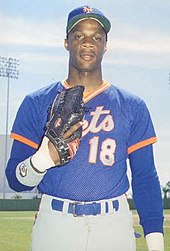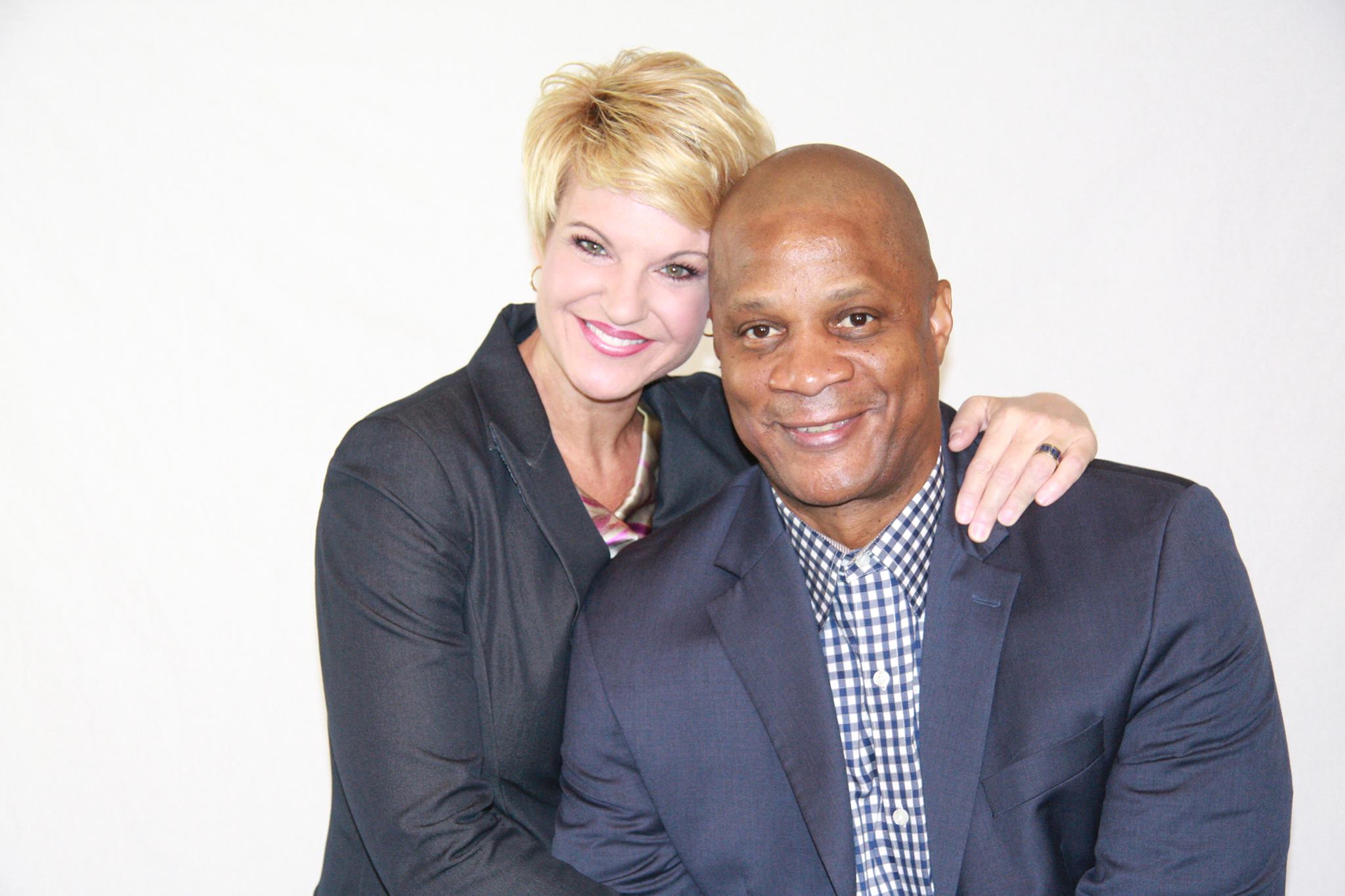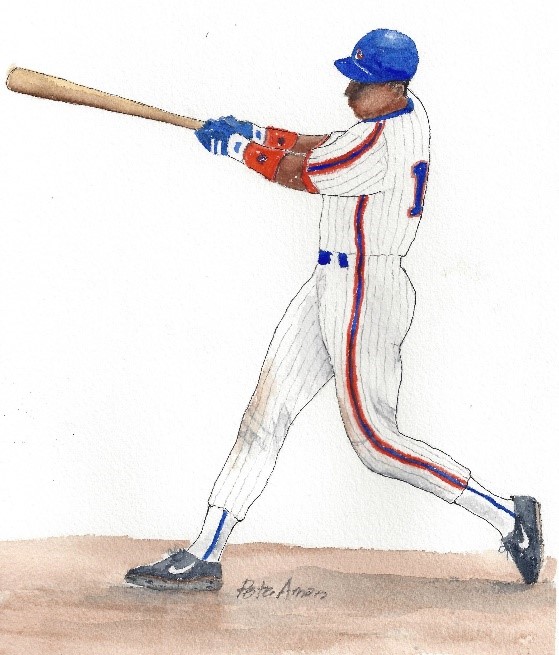Baseball History Comes Alive Now Ranked #2 by Feedspot Among All Internet Baseball History Websites and Blogs!
Guest Submissions from Our Readers Always Welcome!
THE BASEBALL HISTORY COMES ALIVE BLOG
Please note: As we compose new blog entries, we will now send each one out to all our subscribers as we post them. Here’s a link to see the entire Blog Archives -GL
May 27, 2022
Blog Topic
New Book by Pete Aman:
Fielders’ Choice – Life Lessons from Baseball
One of our readers, Pete Aman, is in the process of writing a new book, Fielders’ Choice – Life Lessons from Baseball. It’s a collection of 40 short essays, each featuring a ballplayer and an interesting life lesson we can learn from his life. Each of the essays is illustrated by an original watercolor by the author. I was honored to serve as an editor for the project.
One of the most powerful essays in the collection is the story of Darryl Strawberry and his remarkable recovery from the absolute rock bottom in which his life of addiction and alcohol had led him. The essay has a very appropriate subtitle: Hope, even in the depth of despair. If you know of someone who is struggling with life’s ups and downs or has even given up on life, I hope you will share Darryl Strawberry’s inspirational story. I’m happy to feature it here today. -GL
A Life Lesson from Darryl Strawberry
Hope, even in the depths of despair
Darryl Strawberry, a 6’6” 190 lb. high school phenom, was touted as the next Ted Williams because of his smooth, powerful swing. The New York Mets selected him with the number one pick in the 1980 draft. “Straw” made it to the Big Stage in 1983, earning the Rookie of the Year Award. Over the next 17 seasons, his resume included four World Series Championships, two Silver Slugger Awards, eight All-Star selections, and 335 home runs. Seven times he was on the cover of Sports Illustrated. He was such an electrifying player that fans came to the ballpark early just to watch him take batting practice.
included four World Series Championships, two Silver Slugger Awards, eight All-Star selections, and 335 home runs. Seven times he was on the cover of Sports Illustrated. He was such an electrifying player that fans came to the ballpark early just to watch him take batting practice.
But there was an earlier chapter to Strawberry’s life. He grew up in a home dominated by an angry, alcoholic father. In a drunken rage, his father often beat his son’s bare back with an electrical cord, yelling at him and telling him he would never amount to anything. Scarred by the constant verbal abuse, beatings, and taunting, Darryl used sports as an escape from his father. He parlayed his natural talent into a “can’t-miss” future in professional baseball.
After Strawberry arrived in New York to start his career with the Mets, this 21-year-old, now with money to burn, was no match for the temptations in the Big Apple. He wanted desperately to fit in with the hard-partying Mets players. Introduced to drugs, he soon became trapped in a vicious web of cocaine and alcohol. He was blasting home runs while spinning out of control with his new lifestyle.
Following cuts from both the Dodgers and the Giants and his 1999 release by the Yankees, Strawberry suddenly found himself out of the game. He left behind a trail of misery—personal and professional failings fueled by cocaine addiction. His many transgressions included fights with teammates, skipped games, curfew violations, two divorces, three suspensions for drug possession, and a paternity suit. He had been kicked out of treatment centers, had suffered multiple arrests and probation violations, and was involved in a hit-and-run car wreck. He had even spent 11 months in a Florida State Prison.
The litany of other serious charges and offenses included federal tax evasion, failure to pay child support, domestic violence citations, and solicitation. In addition, he had endured two cancer surgeries and a resultant kidney removal. When he finally hit rock bottom, he was three million dollars in debt with no car and no house. All that remained of a former celebrity lifestyle and a once-promising career were shattered dreams, shattered relationships, and a sick body that had wasted away to 160 lbs.
In one of Strawberry’s recovery programs, he met a recovering addict, Tracy Boulware. Clean for a year, she knew nothing about baseball or Darryl Strawberry, but she read the despair on his face and thought she could help him. He told her to leave him alone. When Darryl relapsed again, Tracy was the one who searched crack houses and behind dumpsters in the seediest parts of town until she found him. He wanted to die, but Tracy refused to let him, telling him that God had a better plan for his life.
After Strawberry started listening to Tracy, he chose to separate himself from the

influences that had nearly destroyed him. He moved into a spare room in his sister’s apartment and began pouring himself into studying the Bible and reading books by Billy Graham. After his long, hard journey, Darryl Strawberry became a changed man, at peace with himself and with God. Baseball is no longer his identity. He has sold his memorabilia—bats, balls, rings and trophies—because “That Strawberry is dead.”[i]
In their remarkable story of redemption, Darryl and Tracy, married since 2006, both became ordained ministers and authors. Together they are on a mission to educate young people about the danger of drugs and to point others to the way of faith. Together, their lives serve as vivid examples that there is always hope, even in the depths of despair.
Pete Aman
(Selection from his forthcoming book, Fielders’ Choice: Life Lessons from Baseball)
[i] Bob Nightengale www.usatoday.com/story/sports/mlb/2013/07/11/darryl-strawberry-tracy-strawberry-ministries-new-york-mets-drugs/2509921/
As always, we enjoy reading your comments. Feel free to add comments below.
Here’s a link to see the entire Blog Archives


Good morning Gary, Very compelling story about Mr. Strawberry. A contemporary of Strawberry’s; who is about the same age and grew up in the same environment {Los Angeles} as he did, had the same potential of a long, productive career, but it was curtailed due to different reasons than Strawberry’s was. It was too many injuries that shortened the career of : Eric Davis. A couple of other examples of how substance abuse problems ruined promising careers {and a pre-mature death}, is a couple of late NL pitchers….Steve Howe and Eric Show. Of course, the unfortunate story of Grover Cleveland Alexander has been well documented. Thnx for posting Mr. Aman’s fine article.
Thanks Tom…greatly appreciate the comments.
Hello Pete, Gary,
Thanks so much for this inspirational account. Anyone who plummets from the pinnacle of an iconic career to rock bottom in order to discover The Good Lord and personal redemption has a story worth hearing, at least in my book. If Darryl Strawberry can save the lives of wayward and impressionable youngsters with examples-in-reverse from his early, misspent years, then all power to him.
I also love the idea of drawing upon the lives and professional careers of retired ballplayers to find lessons which may help us to become the adults God wants us to be.
Blessings to you both,
Michael
Thanks Micahel…those wonderful words of yours are greatly appreciated.
As an ardent Mets fan, I thought Darryl had unlimited talent (called “The black Ted Williams”) and he was certainly a key cog in the Mets ’86 championship season. But had no idea he suffered such a brutal childhood or hit such a devastating rock bottom.
Pete Aman’s book sure seems like a must read!
Thanks Bill…it is a must read. As I mentioned I served as Pete’s editor and I’m proud to have played a small role in the project. I’ve sent a message to Darryl Strawberry about this essay and about the book, and I’m hoping to hear back from him.
Absolutely beautiful. She didn’t give up on him and he learned about the one who won’t give up on anyone.